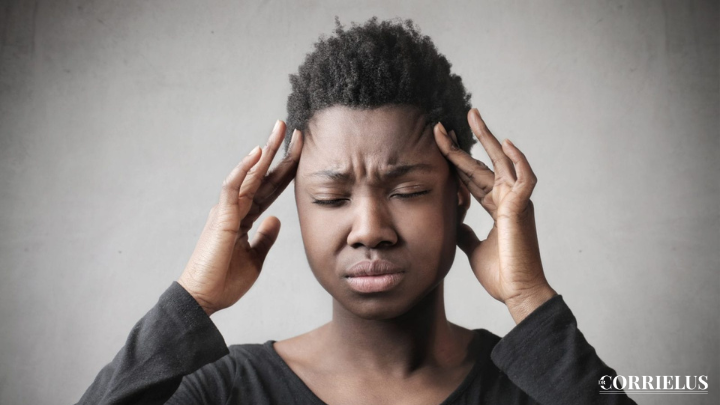Migraines aren’t just a very bad headache.
Compared to other headache illnesses, it is a debilitating neurological condition with unique symptoms and a unique strategy for therapy.
A neurological condition termed migraine is defined by recurrent periods of symptoms, or attacks, which often include a headache, nausea, vomiting, sensitivity to light, touch, smell, or sound, dizziness, vision problems, and tingling or numbness in the face, hands, or feet.
Migraine attacks can strike abruptly and without warning or they can be brought on by specific recognized triggers, such as missing meals, being around smoke or air pollution, or going through a menstrual cycle that causes a shift in hormone levels. The average migraine episode lasts between four and seventy-two hours, however, good therapy can cut that time in half. However, some migraine episodes may last for much longer than 72 hours.
Types of Migraines
Migraines come in two basic varieties: those with and those without aura.
Aura-related migraine is further subdivided into four subtypes: normal aura-related migraine, brainstem aura-related migraine, hemiplegic migraine, and retinal migraine. Additionally, several of these subtypes contain additional sub-subtypes.
According to the number of days a person experiences symptoms within a given month, migraine can also be classified as chronic or episodic. A chronic migraine lasts for at least three months and causes discomfort on at least 15 days per month.
Having migraine-like symptoms for less than 15 days in a month is considered to be episodic migraine.
3 to 7 million Americans and 144 million other individuals are said to suffer from chronic migraine. Similar to acute migraine, chronic migraine affects up to three times as many women as males.
Knowing what kind of migraine you have can help you and your doctor decide on the best course of action. If you wish to take part in clinical trials, it can be absolutely necessary.
Migraine Without Aura
A migraine without an aura, formerly known as a common migraine, is characterized by a headache that often affects one side of the head, has a pulsing nature, gets worse with movement, and is accompanied by nausea or light and sound sensitivity.
The prodrome, or warning phase, of migraines without aura may include signs including sadness, food cravings, difficulties concentrating, compulsive yawning, and others.
Additionally, it can have a postdrome phase, during which the headache pain has subsided but the sufferer is still fatigued, achy, and has difficulties focusing.
As an alternative, when a migraine’s headache phase has subsided, a person may experience happiness and even euphoria.
Migraine with Aura
Up to 30% of migraine sufferers experience migraine with aura, often known as classic migraine. Except for the headache phase of the migraine attack being preceded by neurologic abnormalities that may include changes in vision, speech, or sensory perception, it often results in the same symptoms as a migraine without aura.
Visual aura symptoms include tunnel vision, impaired vision, momentary blindness or colorful patches, and seeing stars, zigzags, or flashing lights.
Sensory disruptions can cause tingling or numbness in a body part, the face, or the tongue.
Aura symptoms can occasionally appear without a headache preceding or succeeding them.
This unusual subtype of migraine with aura was once referred to as basilar-type migraine. It typically includes neurologic symptoms such double-vision, difficulty hearing or speaking, vertigo, and loss of coordination and balance.
Migraine with hemiplegia
Both familial hemiplegic migraine and sporadic hemiplegic migraine are examples of this kind of migraine. Both have an aura, a fever, and hemiplegia (paralysis on one side of the body). Both are not very common.
Retinal migraine
The relatively rare condition known as retinal migraine can temporarily impair vision in one eye. It’s diagnosed when a person experiences recurrent episode of one-sided visual disruption, including the kinds of visual abnormalities frequently present in migraine aura or migraine-related blindness. These symptoms often develop over five minutes or longer may continue for up to an hour and could be preceded by or preceded by a headache.
Chronic Migraine
A headache that occurs 15 or more days per month for at least three months, with migraine-like symptoms on at least eight of those days, is referred to as chronic migraine.
It might be difficult to tell when one migraine attack finishes and another one starts due to the frequent occurrence of symptoms in chronic migraine. Furthermore, it can be challenging to distinguish between chronic migraine and other conditions that are expected to result in daily or almost daily headaches, such as drug overuse headaches.
A word from the doctor
It’s crucial to consult your doctor if headaches are interfering with your everyday life and you are unsure whether they are a migraine symptom. There are several therapies available for migraines, even though they might seem incapacitating at times. The presence of headaches may be an indication that something else is wrong.
Your doctor can put you on a treatment plan as soon as you begin discussing your problems.
Do you want to know more about migraines and how to relieve them? If so, then Contact me right away!



